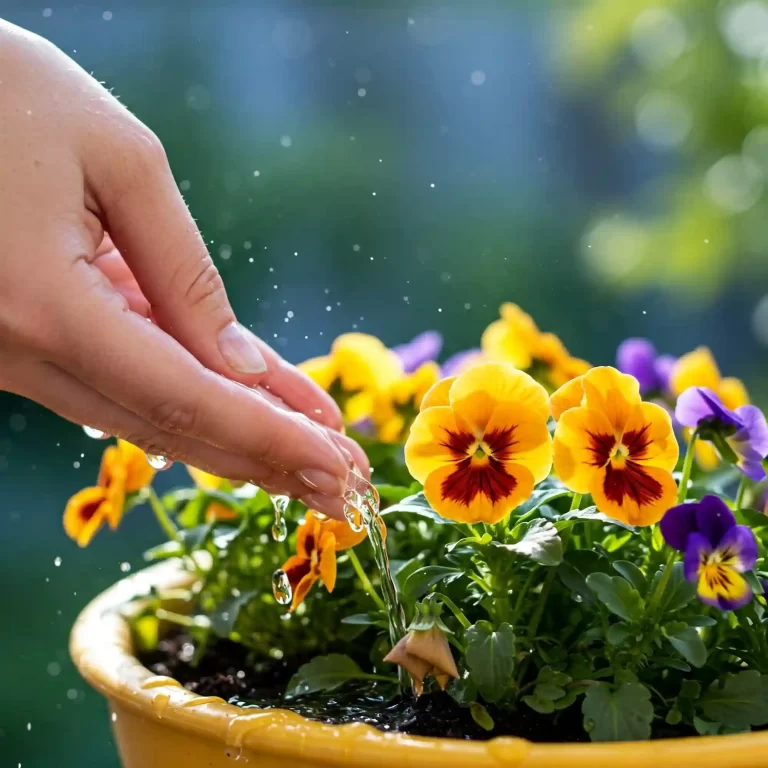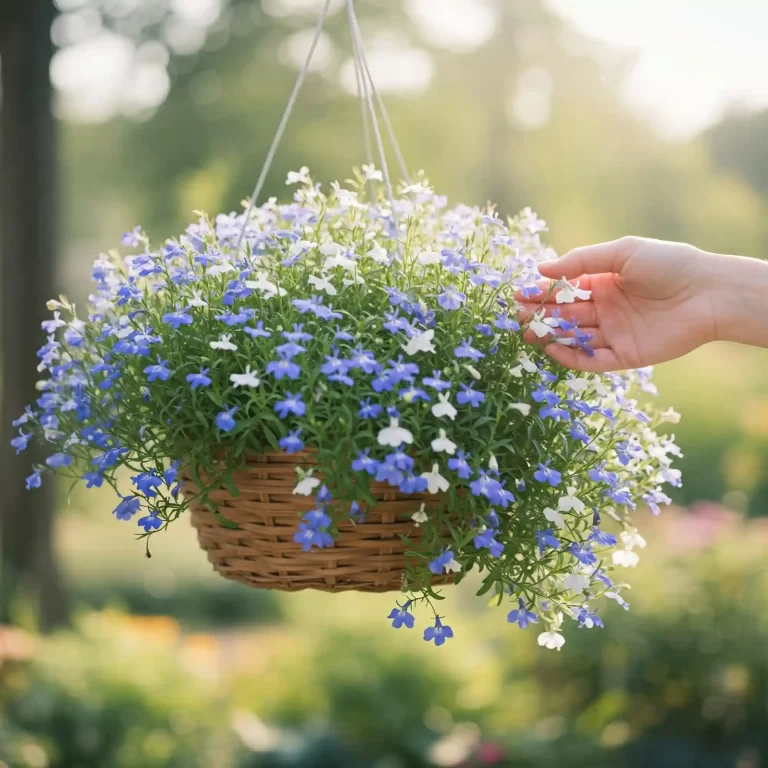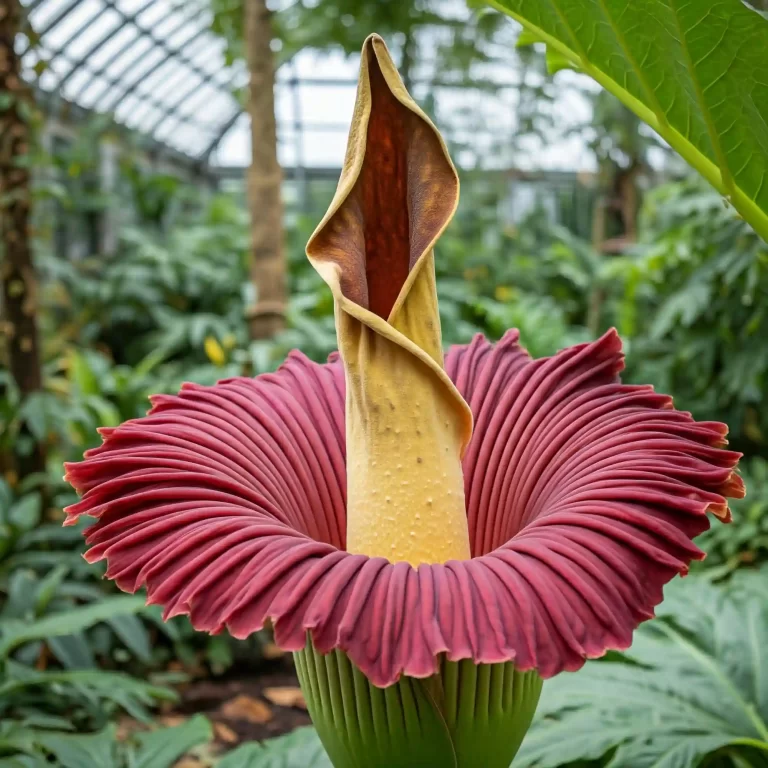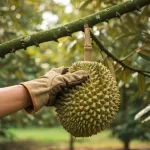Are you tired of your garden looking dull and lifeless? Do you yearn for a touch of natural beauty and vibrant color? Look no further than the enchanting parsley flower! While often overlooked for its culinary cousin, the parsley plant boasts delicate and charming blossoms that can transform your outdoor space. In this comprehensive guide, we’ll walk you through ten essential steps to cultivate thriving parsley flowers, from selecting the perfect spot to harvesting and enjoying their beauty. Let’s embark on this gardening adventure together!
Step 1: Choosing the Perfect Spot for Your Parsley Flowers
The foundation for cultivating thriving parsley flowers lies in selecting the ideal growing environment. Parsley, a sun-loving herb, demands ample sunlight to flourish. Aim for a location that receives at least six hours of direct sunlight daily. While it can tolerate some shade, optimal growth and flower production occur in sun-drenched spots.
Beyond sunlight, soil composition plays a pivotal role in parsley’s health. Opt for well-drained soil rich in organic matter. Parsley thrives in slightly acidic to neutral soil with a pH range of 6.0 to 6.8. If your soil is heavy clay or excessively sandy, consider amending it with compost or organic matter to improve its structure and fertility.
For gardeners with limited outdoor space, container gardening offers a viable solution. Choose a pot with adequate drainage holes and fill it with a high-quality potting mix. Ensure the container is large enough to accommodate the parsley plant’s root system, as overcrowding can hinder growth.
Step 2: Selecting the Right Parsley Seeds
Choosing the appropriate parsley seeds is crucial for cultivating vibrant flowers. Several parsley varieties boast stunning blooms, each offering unique characteristics. Curly-leaf parsley, renowned for its culinary use, often features delicate yellow flowers. Flat-leaf parsley, favored for its milder flavor, produces small, white flowers. Italian parsley, with its distinctive leaf shape, showcases greenish-yellow blossoms.
When selecting seeds, prioritize high-quality options from reputable suppliers. Look for seeds that are fresh, untreated, and have a high germination rate. Consider factors like climate and desired flower color when making your selection. For example, if you reside in a region with mild winters, you might opt for a variety that blooms earlier in the season.
To enhance germination success, consider soaking parsley seeds overnight in lukewarm water before planting. This process softens the seed coat, facilitating quicker sprouting.
Step 3: Preparing Your Soil for Planting
Before sowing your parsley seeds, it’s essential to prepare the soil to create an optimal growing environment. Parsley thrives in loose, well-draining soil rich in organic matter. Begin by thoroughly removing weeds and debris from the planting area. Loosen the soil to a depth of about 8 inches using a garden fork or tiller.
Incorporate compost or well-rotted manure into the soil to enhance its fertility and structure. These organic amendments improve soil drainage, aeration, and nutrient content, providing a healthy foundation for your parsley plants. If your soil is particularly heavy or clay-like, consider adding sand or perlite to improve drainage.
For container gardening, fill your chosen pots with a high-quality potting mix specifically formulated for vegetables or herbs. This type of potting mix provides the necessary nutrients and drainage for successful parsley growth.
Step 4: Sowing Your Parsley Seeds
With your soil prepared, it’s time to sow your parsley seeds. Parsley seeds are notoriously slow to germinate, so patience is key. Ideally, plant your seeds in the spring after the last frost has passed. However, with the aid of indoor seed starting, you can get a head start on the growing season.
Sow parsley seeds about ¼ inch deep, spacing them approximately 6 to 8 inches apart. Gently cover the seeds with soil and water thoroughly. Maintain consistent moisture by misting the soil regularly or using a bottom-watering technique. For indoor sowing, use seed starting trays or pots filled with a sterile seed starting mix. Place the containers in a warm, sunny location.
To increase germination rates, consider covering the seed trays with plastic wrap to create a humid environment. Once seedlings emerge, remove the plastic wrap and provide ample light.
Step 5: Providing Proper Care for Your Parsley Seedlings
Once your parsley seedlings emerge, they require consistent care to ensure healthy growth. Regular watering is essential, especially during the seedling stage. Aim to keep the soil moist but not soggy, as overwatering can lead to root rot. Avoid overhead watering, as this can promote fungal diseases. Instead, opt for gentle watering at the base of the plants.
To protect your delicate seedlings from pests and diseases, provide adequate spacing between plants. Good air circulation helps prevent fungal issues. Monitor your seedlings for signs of pests like aphids or caterpillars. If you notice any infestations, gently remove them by hand or use an organic insecticidal soap.
As your parsley seedlings grow, they may become overcrowded. Thinning is necessary to encourage robust growth and prevent competition for resources. Carefully remove weaker seedlings, leaving the strongest plants spaced approximately 6 to 8 inches apart.
Step 6: Fertilizing Your Parsley Plants
To ensure robust growth and abundant flower production, regular fertilization is essential for parsley plants. While parsley is a relatively low-maintenance herb, providing supplemental nutrients can enhance its vitality. Opt for a balanced fertilizer with a ratio of nitrogen, phosphorus, and potassium, such as a 10-10-10 formulation.
Apply a light layer of fertilizer around the base of your parsley plants every four to six weeks during the growing season. Avoid over-fertilizing, as excessive nitrogen can lead to lush foliage at the expense of flower production. For container-grown parsley, use a diluted liquid fertilizer formulated for houseplants, following the package instructions.
Alternatively, consider using organic fertilizers like compost tea or fish emulsion to nourish your parsley plants. These natural options provide essential nutrients while improving soil health.
Step 7: Watering Your Parsley Flowers
Consistent and proper watering is crucial for the health and vitality of your parsley plants. While parsley prefers moist soil, it’s essential to avoid overwatering, as this can lead to root rot and fungal diseases. Aim to keep the soil consistently moist but not soggy.
Check the soil moisture level regularly by inserting your finger about an inch into the ground. If the soil feels dry, it’s time to water. During hot, dry weather, you may need to water your parsley plants more frequently. However, reduce watering during cool, rainy periods to prevent waterlogging.
To conserve water and minimize evaporation, apply a layer of mulch around the base of your parsley plants. Mulch helps retain soil moisture, suppresses weed growth, and regulates soil temperature.
Step 8: Protecting Your Parsley Plants from Pests and Diseases
Parsley plants are susceptible to a variety of pests and diseases that can hinder their growth and reduce flower production. Vigilant monitoring and proactive measures are essential to protect your plants. Common pests include aphids, caterpillars, and leaf miners. These tiny insects can sap plant vitality and distort leaves.
To deter pests, maintain good garden hygiene by regularly removing weeds and plant debris. Strong water sprays can dislodge aphids, while introducing beneficial insects like ladybugs can help control populations. If infestations persist, consider using organic insecticides or insecticidal soap.
Fungal diseases, such as powdery mildew and leaf spot, can also affect parsley plants. These diseases thrive in humid conditions and poor air circulation. To prevent fungal issues, space your parsley plants adequately to allow for good airflow. Avoid overhead watering, as wet foliage can create a favorable environment for fungal growth. If you notice signs of disease, promptly remove affected plant parts and consider using a fungicide.
Step 9: Harvesting and Enjoying Your Parsley Flowers
The culmination of your gardening efforts arrives when your parsley plants burst into bloom. Harvesting parsley flowers not only enhances their appearance but also encourages continued growth and flower production.
To harvest parsley flowers, use clean pruning shears to snip the flower stems just above a set of leaves. This promotes bushier growth and encourages the plant to produce more flowers. Harvest in the morning when the flowers are fresh and vibrant.
Parsley flowers offer a delightful array of culinary and decorative possibilities. Their delicate petals add a touch of elegance to salads, soups, and sauces. Infuse them into vinegars, oils, or syrups to create unique flavor profiles. Dry the flowers for use in potpourris or to garnish baked goods.
Beyond culinary applications, parsley flowers make stunning additions to floral arrangements. Their delicate beauty complements other blooms, creating captivating and natural-looking bouquets. Experiment with different color combinations and arrangements to showcase the versatility of parsley flowers.
Step 10: Propagating Your Parsley Plants
To expand your parsley collection or rejuvenate older plants, propagation is a viable option. Parsley can be propagated through seeds or cuttings, offering gardeners flexibility in expanding their herb garden.
Starting parsley from seed is a straightforward process. Collect mature parsley seeds from spent flower stalks. Allow the seeds to dry completely before storing them in a cool, dark place. Sow the seeds in well-draining soil, following the same guidelines as for direct sowing.
For those seeking a quicker method, propagating parsley from cuttings is an alternative approach. Select healthy, non-flowering stems with multiple nodes. Cut the stems into sections, ensuring each cutting has at least two nodes. Remove the lower leaves and dip the cut ends in rooting hormone for optimal results. Plant the cuttings in a moist potting mix and provide bottom heat to encourage root development.
With proper care and patience, your parsley cuttings will develop roots and establish themselves as new plants.
By following these ten essential steps, you can successfully cultivate vibrant parsley flowers that enhance the beauty and functionality of your garden. Experiment with different parsley varieties, explore creative culinary and decorative uses, and enjoy the rewards of your gardening efforts. Happy gardening!
Conclusion
Cultivating vibrant parsley flowers is a rewarding endeavor that adds beauty and flavor to your garden. By following these ten essential steps, you can successfully grow and enjoy these delightful blossoms. Remember, patience and consistent care are key to achieving thriving parsley plants. Experiment with different parsley varieties, explore creative culinary and decorative uses, and share your gardening successes with fellow enthusiasts. Happy gardening!
With dedication and a little green thumb, your garden will be adorned with the enchanting beauty of parsley flowers, transforming your outdoor space into a fragrant and visually captivating oasis.







